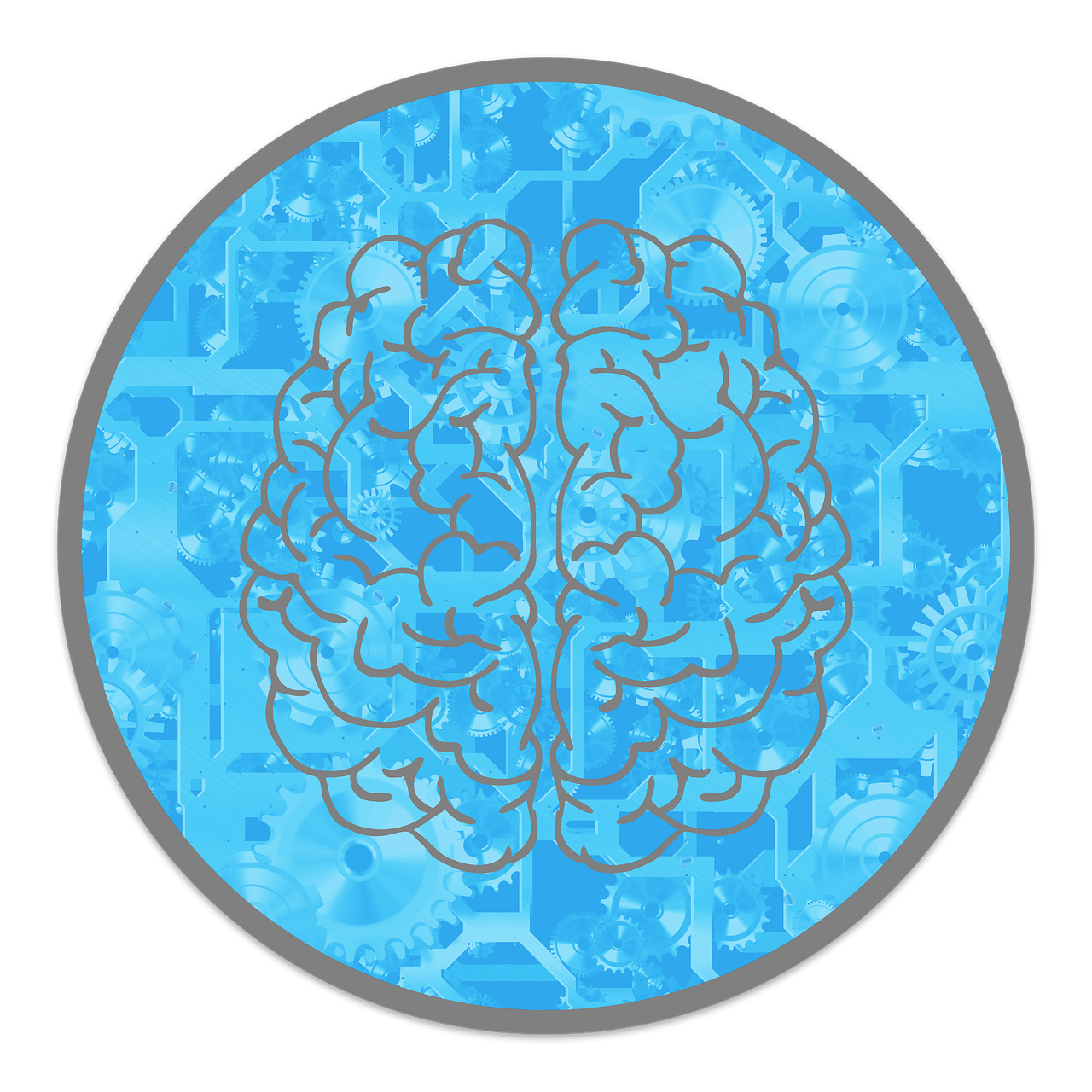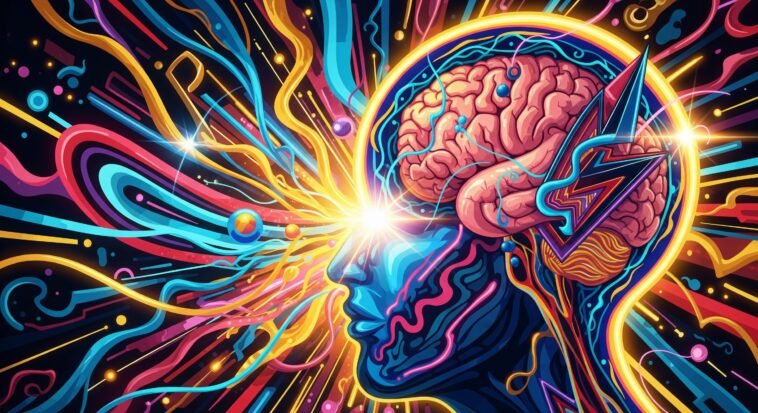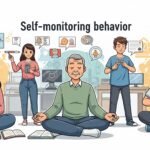
Ever feel like you’re running on fumes while everyone else has main character energy?
Plot twist: your endorphins probably ghosted you.
These little happiness ninjas are your body’s natural mood boosters.
When they go MIA, everything sucks more – that stubbed toe feels like a truck hit you, and Monday blues become full existential crisis mode.
Good news? You can hack your own happiness chemistry.
No sketchy supplements or cult-y wellness trends required – just real ways to get your natural high back.
Recognizing Low Endorphin Symptoms
Your body slides into your DMs with red flag alerts when endorphins dip.
Catch these warning signs early, and you can fix the glitch before your mood crashes harder than a overhyped Netflix show.
Physical symptoms
Everything hurts like you’re made of glass
Your pain tolerance basically rage-quits when endorphins ghost you.
That paper cut? Feels like you got attacked by Wolverine.
Your usual headache becomes a full-on boss battle, and your body acts like every surface is made of lava.
Your nervous system turns into that overly dramatic friend who thinks a hangnail is a medical emergency.
You’re tired like a phone on 1%
This isn’t “I need coffee” tired – this is “my soul needs a vacation” exhausted.
You sleep eight hours but wake up feeling like you ran a marathon in your dreams.
Simple tasks like folding laundry feel like climbing Mount Everest in flip-flops.
Your energy bar is permanently stuck in the red zone.
Sleep becomes your toxic ex
Your sleep schedule goes completely rogue.
You either can’t fall asleep (thanks, racing thoughts) or you wake up every two hours like a cranky baby.
Even when you do sleep, it’s that fake, low-quality sleep that leaves you more tired than when you started – like getting a counterfeit energy drink.
Your stomach joins the chaos
Your digestive system decides to throw its own personal tantrum.
You’re either stress-eating like you’re preparing for hibernation or food suddenly becomes as appealing as cardboard.
Your gut becomes moodier than a teenager, with random bloating, nausea, or bathroom drama that makes zero sense.

Emotional and mental symptoms
Your mental health app just crashed
This is the big one – when your endorphins peace out, your mood flatlines harder than a Marvel movie without any good one-liners.
You’re not just having a bad day; you’re stuck in that emotional equivalent of Windows 95 trying to run TikTok.
Everything feels gray, like someone turned down the saturation on your entire life.
You might catch yourself staring at nothing, feeling like a background character in your own story.
Your stress tolerance becomes paper-thin
Your anxiety becomes that friend who shows up uninvited and overstays their welcome.
Traffic jam? Existential crisis.
Email from your boss? Must be getting fired.
Your brain starts treating everyday situations like they’re zombie apocalypse-level emergencies.
You’re basically running on Windows Vista while everyone else has the latest iOS update.
Your emotions become a chaotic TikTok feed
One minute you’re laughing at memes, the next you’re crying because the barista spelled your name wrong.
Your mood swings become more unpredictable than Netflix’s algorithm.
You’re experiencing every emotion like it’s turned up to 11, then suddenly feeling absolutely nothing – emotional whiplash that would make a soap opera jealous.
Everything you used to love becomes “Meh”
This one hits different because it’s not just feeling sad – it’s feeling nothing about things that used to light you up.
Your favorite hobbies become as exciting as watching paint dry.
That show you binged three times? Boring.
Your go-to comfort food? Tastes like cardboard.
It’s like your brain’s reward system went on permanent vacation without leaving a forwarding address.
Behavioral and social symptoms
You become a social hermit crab
Hanging out with people starts feeling like emotional labor you can’t afford.
You know that feeling when your phone battery is at 5% and someone wants to FaceTime? That’s your social energy 24/7.
Even your closest friends start feeling like energy vampires, and you find yourself making excuses that would make a middle schooler proud.
Your brain becomes a bargain hunter for quick fixes
When your natural happiness factory shuts down, your brain turns into that friend who panic-shops at 2 AM looking for something, anything, to fill the void.
No endorphins? “Fine, let’s try wine.”
Still nothing? “Maybe retail therapy?”
Your brain starts swiping right on every bad coping mechanism in the book.
Working out becomes your worst enemy
Remember when exercise used to feel good?
When you’d finish a workout feeling like you could conquer the world?
Now it feels like your body is trolling you.
That “runner’s high” everyone talks about? Completely MIA.
It’s like trying to get excited about a Marvel movie with no action scenes – technically it’s still a movie, but where’s the fun part?

Evidence-Based Solutions to Boost Endorphins Naturally
Good news: your endorphin system isn’t broken – it’s just buffering like Netflix on bad WiFi.
Your happiness factory is totally hackable with science-backed cheat codes.
No sketchy supplements or wellness cults required.
Exercise and physical activity
High-Intensity Interval Training (HIIT)
High-Intensity Interval Training (aka HIIT) is like the espresso shot of exercise—short, strong, and it hits fast.
Science (yes, real lab-coat science) found that even just 15-20 minutes of HIIT can flood your brain with endorphins—those happy chemicals that make you feel like a superhero with a Spotify playlist.
And the mood boost? It can last for hours.
Not bad for a quick sweat session.
Aerobic exercise and cardio
Think running, biking, dancing, or even swimming laps like you’re in a ‘Baywatch’ montage.
These steady, heart-pumping workouts are famous for something called the “runner’s high”—basically, your brain’s version of a confetti cannon.
All it takes is about 30 minutes, three to four times a week, to start reaping the good vibes.
Bonus: it’s also great for your heart and Netflix guilt.
Strength training
Lifting weights or doing bodyweight stuff (push-ups, squats, planks until you cry) also gets your endorphins going.
It works a bit differently than cardio, but the result’s the same: more feel-good chemicals, less stress, and stronger muscles so you can carry all your groceries in one trip—like a boss.
Nutritional strategies
Essential amino acids
To make endorphins, your brain needs certain amino acids.
These are like the Legos of mood chemistry—without them, nothing gets built.
Here are the VIPs:
- Tryptophan – Found in turkey, eggs, cheese, and salmon. It’s basically the reason everyone gets sleepy after Thanksgiving dinner.
- Tyrosine – You’ll get this one in bananas, almonds, and avocados. Aka your smoothie’s secret weapon.
- Phenylalanine – Think meat, fish, eggs, and dairy. This one’s the brain’s hype man—it helps kickstart the whole feel-good process.
Dark chocolate and natural compounds
Dark chocolate (like, the fancy kind with 70% cacao or more) isn’t just a moody rom-com cliché—it literally makes you happier.
Thanks to natural compounds like phenylethylamine (aka the “love drug”) and anandamide (which mimics bliss chemicals), your brain lights up like it’s starring in a Pixar film.
Spicy foods and capsaicin
Capsaicin, the compound that makes peppers hot, triggers endorphin release as your body responds to the perceived “pain” of spiciness.
Regular consumption of moderately spicy foods can help maintain healthy endorphin levels.
Lifestyle modifications
Laughter and social connection
Laughter is nature’s therapy—and it’s free!
Whether you’re hanging out with friends, watching reruns of Brooklyn Nine-Nine, or accidentally spiraling into a weirdly specific meme rabbit hole, genuine laughter triggers a solid endorphin hit.
Bonus: bonding with people while you’re at it gives your brain a double dose of happy.
Music and creative expression
You know that moment when your favorite song drops and suddenly you’re the main character in a movie?
That’s endorphins at work. Singing, dancing like no one’s watching (even if your cat is), or playing an instrument lights up your brain’s reward circuits.
Painting, writing, or crafting? Same deal—your brain loves creative flow like it loves caffeine on a Monday.
Meditation and mindfulness practices
Meditation doesn’t have to mean sitting cross-legged in total silence while thinking about nothing (who can even do that?).
Just 10–15 minutes of mindful breathing or guided meditation can boost your baseline endorphin levels and help your body chill out when life gets chaotic.
Apps, YouTube, even mindful dishwashing—yes, that counts.
Quality sleep optimization
You can’t Netflix your way through 3 a.m. and expect your brain to be in peak mood mode.
Quality sleep = steady endorphin production.
Set a regular sleep schedule, wind down with a cozy bedtime routine (blue light glasses, anyone?), and keep your bedroom cool, dark, and as peaceful as a cottagecore TikTok.

Professional Treatment Options
Okay, real talk—sometimes yoga, dark chocolate, and dance breaks just aren’t enough.
If you’ve been trying all the feel-good tricks and still feel like a human raincloud after 4–6 weeks, it might be time to tag in a professional.
When to seek medical evaluation
If your mood’s in the basement, your energy’s MIA, or life just feels meh way too often, talk to a doctor or mental health pro.
No shame in the game—your brain might be waving a red flag for something deeper going on.
Think of it like going to the mechanic when your check engine light comes on.
You could ignore it, but why risk a breakdown on the freeway of life?
Therapeutic approaches
Sometimes, you need tools from the expert toolbox.
Here are a few tried-and-true methods the science squad swears by:
- CBT (Cognitive Behavioral Therapy) – It rewires your brain’s unhelpful thought loops and helps you respond to stress like a Jedi instead of a gremlin.
- Acupuncture – Ancient needle magic that can help with stress, pain, and maybe even your existential crisis. (Okay, maybe not all of it, but it helps.)
- Massage therapy – Regular massages reduce tension and kickstart your body’s relaxation chemistry. It’s like a reset button for your nervous system.
- Light therapy – A few minutes of bright light each morning can help balance your mood if you’re sensitive to seasonal changes.
Creating Your Personal Endorphin Restoration Plan
Getting your brain’s feel-good factory back online takes a little strategy and a lot of consistency.
Think of it less like a boot camp and more like building your own vibe-boosting playlist—one track at a time.
Start small, keep it real, and don’t try to do everything on Day 1.
This isn’t a montage—it’s a lifestyle.
Week 1-2: Foundation building
Start with the basics.
Lock in a regular sleep schedule—yes, that means no more doomscrolling at 2 a.m.—and move your body every day.
Nothing wild, just 20–30 minutes of walking, stretching, or dancing like you’re in a 2000s music video.
Focus on showing up, not crushing world records.
Week 3-4: Expanding your toolkit
Once you’ve got a rhythm, spice things up.
Add in some feel-good foods (dark chocolate totally counts), tweak your meals to include those endorphin-boosting amino acids, and explore ways to chill out—like journaling, yoga, or finally giving meditation that 10-minute try.
Test-drive different workouts until you find something that makes you want to show up (Zumba? Kickboxing? Forest walks with lo-fi beats?).
Month 2 and beyond: Fine-tuning and maintenance
By now, you’ve got your own little self-care symphony going.
This is where you play DJ—keep what works, ditch what doesn’t, and stay flexible.
Track your mood, energy, sleep, or even pain levels (apps or bullet journals help!).
Endorphin-boosting isn’t one-size-fits-all, so keep adjusting until it fits your lifestyle like your comfiest hoodie.

Conclusion: Reclaiming Your Natural Well-Being
Feeling blah doesn’t have to be your default setting.
Low endorphins might be the villain right now, but guess what? You’ve got the tools to fight back—no cape required.
Move your body, eat real food (yes, chocolate counts), laugh often, and hang with your people.
These small, consistent steps help your brain get back to pumping out those feel-good chemicals.
It won’t happen overnight—this is more slow burn romance than instant movie makeover—but most people feel better in just a few weeks.
Your body’s built to bounce back.
Give it the right support, and it’ll reward you with more energy, better moods, and less “ugh.” You’ve got this



